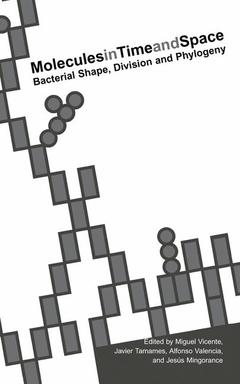Description
Molecules in Time and Space, Softcover reprint of the original 1st ed. 2004
Bacterial Shape, Division and Phylogeny
Coordinators: Vicente Miguel, Tamames Javier, Valencia Alfonso, Mingorance Jesús
Language: English
Subjects for Molecules in Time and Space:
Keywords
Chromosom; Escherichia coli; bacteria; bacterial cell; conservation; genes; prokaryotes; proteins
Publication date: 01-2014
275 p. · 15.5x23.5 cm · Paperback
Publication date: 07-2004
280 p. · Hardback
Description
/li>Contents
/li>
During the last decade a wealth of new data has arisen from the use of new fluorescent labelling techniques and the sequencing of whole microbial genomes. One important conclusion from these data is that bacterial cells are much more structured than previously thought. The wall and the outer membrane contain topological domains, some proteins localize or move in specific patterns inside the cells, and some genes appear clustered in the chromosome and form conserved evolutionary units. Many of these structures are related to the cell cycle and to the process of cell morphogenesis, two processes that are themselves related to each other. From these observations the dcw gene cluster appears as a phylogenetic trait that is mainly conserved in bacilli. Molecules in Time and Space reviews the data on the formation of subcellular patterns or structures in bacteria, presents observations and hypotheses on the establishment and the maintenance of cell shape, and on the organization of genetic information in the chromosome.




